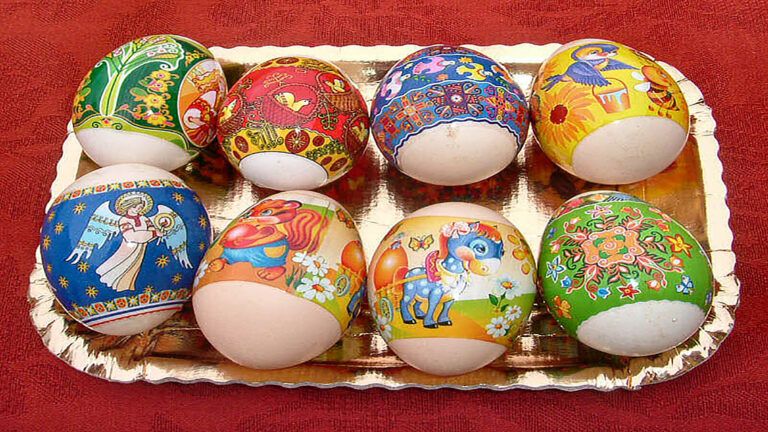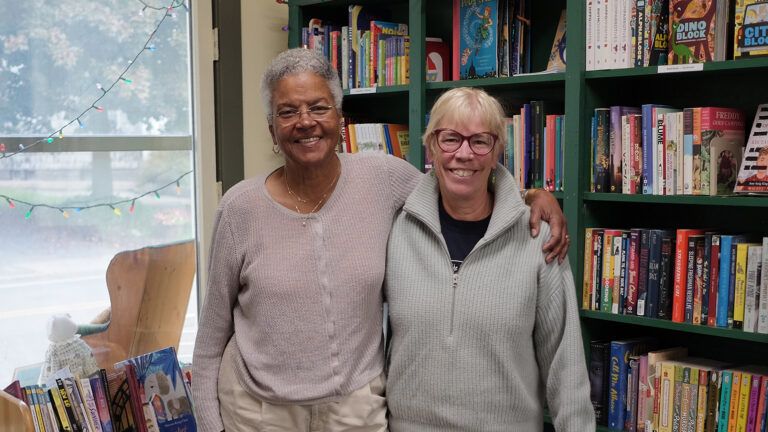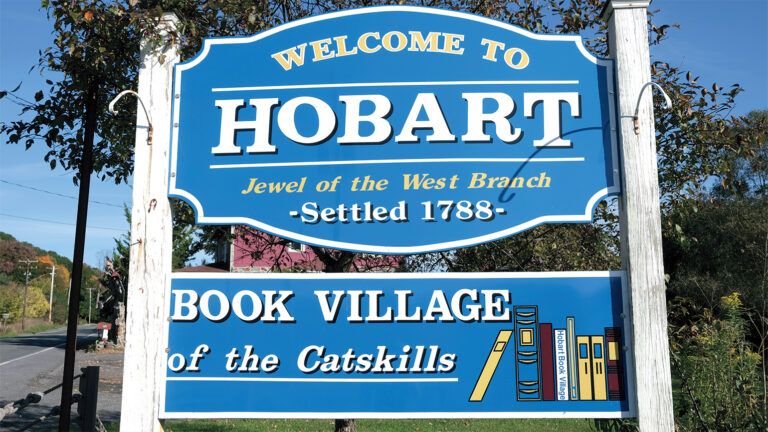Mountains and religions go together. According to my Jewish faith, Moses met God at the top of Mount Sinai and Abraham spoke to him on Mount Moriah.
Maybe that was part of what brought my daughter and me to the frozen slopes of Mount Everest, standing outside our mess tent at base camp, staring up at the jagged rock disappearing into the clouds.
I understood why the Sherpas called this mountain Chomolungma, mother goddess of the world. It was so massive, its heights seemed to pierce the heavens. Though bulked up by my thick jacket and four layers of clothing, I felt humbled in the face of something so magnificent.
And a bit uneasy too. How many sacrifices had my 23-year-old daughter, Nikki, and I made over the past eight years to be here together, on the last and most dangerous step of our extraordinary journey to climb the highest peaks on each of the seven continents?
It had required weeks of physical training, considerable money, so much time away from home, friends and work. Yet this sacrifice would be painful in a different way. The first night of Pesach, Passover was just a few days away.
Instead of celebrating with family, we’d be huddled with five strangers, three guides and a host of Sherpas, preparing for our biggest acclimatization ascent yet–a tough and scary climb up and across the treacherous Khumbu Icefall to Camp 1, at 6,100 meters (20,013 feet), for an overnight stay before descending again–to sharpen our skills and prepare our bodies to cope with extreme altitude.
Back home in Australia, Passover was always a time when we filled our dining room with family and friends, even strangers from our synagogue who had no place to go, reading the story of the Exodus and sharing in the traditional meal. As modern orthodox Jews, that was a big deal.
But this was the only window of opportunity for climbing Everest–when the strong winds of the jet stream crossing the summit temporarily lift and the monsoons haven’t hit yet. I only hoped God would bless us and keep us safe, as he had on our other expeditions.
To look at Nikki and me, two blonde Aussies, you wouldn’t think we were accomplished mountaineers. I was a lawyer and the chairman of various companies; my daughter was in medical school.
But eight years earlier, in the summer of 2000, after trekking to Everest’s base camp with Nikki on vacation, I picked up the book Seven Summits by Richard Bass and Frank Wells, who became the first to summit the seven continental peaks.
Accomplishing that feat had become a mountain climber’s holy grail. Many give up; some have lost their lives in the pursuit. Fewer than 350 people have succeeded. If Nikki and I could climb Everest, we’d be the first mother-daughter team to join that exclusive club.
Kosciuszko in Australia, Tanzania’s Kilimanjaro, Antarctica’s Vinson Massif, Argentina’s Aconcagua, Elbrus in Russia, McKinley in Alaska, we’d successfully summited them all. We’d even climbed Cho Oyu, the sixth highest mountain on earth.
Everest was a different animal. The peak is 8,848 meters (29,029 feet) high, and the air is so thin that without bottled oxygen and proper acclimatization, the body can totally shut down. Even expert climbers have met a tragic end there.
“Just because we’ve done six of the seven summits doesn’t mean we have to do Everest,” I’d said to Nikki. As a mother, I wanted to pause and discuss the risks. Nikki hadn’t hesitated.
“Look, I’m going to do it, Mom, at some stage in my life. I’d rather do it with you. We know each other’s strengths and weaknesses. We inspire each other. We’re safer together. And it’s more fun.”
She was right. We were a strong team. “Besides,” Nikki said with a smile, “who else but you will volunteer to sleep on the windy side of the tent?”
There was just one problem. Passover. My parents and my in-laws were Holocaust survivors, and I’d instilled in my children the importance of maintaining our Jewish traditions.
Nikki and her brother, Jamie, both attended Jewish day school. We lit the Shabbat candles every Friday night and observed the high holy days and traditions.
Our faith had been part of our mountaineering from the beginning. The first mountain Nikki and I ever climbed together, when she was five, was Masada, Herod’s desert fortress in Israel, where Jewish revolutionaries of the first century made their last, tragic stand against the Roman Army.
Years later, when we climbed Mount Elbrus, in Eastern Europe, we learned that during World War II, Hitler’s soldiers had once planted a swastika flag at the summit. Reaching the peak felt like we’d summited the mountain for our people.
Maybe that’s why my husband gave Mount Everest his blessing. “You’d be the first Jewish mother-daughter team as well,” he pointed out. “We are all so proud of you.”
We flew into Kathmandu to begin our two-month expedition and reached base camp. Two days later our whole group observed a Sherpa prayer ritual called the puja ceremony, asking protection for our journey.
The leading Buddhist monk from the Tengboche Monastery had trekked to the base camp to preside. He even blessed our climbing gear.
At the end, we smeared flour on one anothers’ faces–a symbol of the hope that we might live to see each other when we were old and gray. I said my own prayer. Please, God, watch over us on this mountain… please return us safely.
Now, outside the mess tent, I took one more look at the mountain before joining the others for dinner. I settled in at the folding table beside Nikki. Our guides and a British member of our group were already eating. “How are you feeling, Cheryl?” one of the guides asked.
“A little homesick,” I admitted, poking at my plate. “The whole family is getting together at my sister-in-law’s for Passover, but we won’t be there.”
A member of our group spoke up. “Passover? What’s that?”
Nikki and I began to explain. Another climber chimed in. “I’ve heard of that,” he said. “At the Last Supper, Jesus and his disciples were celebrating it.”
“That’s right,” I said.
We talked a bit more about what the holiday meant for our family. “We brought some matzah with us, but obviously, we can’t have a Seder here,” I said.
The sirdar, the leader of the Sherpas, came by our tent later. He was curious to know what food we typically ate at a Seder. “Well, there’s charoset, a mix of apples, nuts and wine, which symbolizes the mortar Jewish slaves used in building the Egyptian Pharoah’s cities,” I said.
I worried that that was a bit too much information, but the sirdar wanted more.
I told him about the hard-boiled eggs, a symbol of life and rebirth and the unbreakable spirit of the Jewish people. The lamb shank, a symbol of the lamb’s blood used to mark the doorposts of the Jews, to keep them safe from the deadly plague that finally convinced the Pharaoh to let the Jewish people go.
Eventually, the sirdar’s curiosity was satisfied.
About a week later, our group set out at 3:45 a.m. for the icefall, an unstable maze of ice blocks, frozen towers (called seracs) and hidden crevasses. We followed a twisting path of ropes and lashed-together ladders anchored into the ice.
A fall into a crevasse could be fatal. If a serac toppled, there had better be no one in its way. And we had to encounter the Khumbu Icefall on each acclimatization ascent and descent.
We made it back to base camp that afternoon safely, but absolutely exhausted. Then we did another acclimatization trek a few days later, this one for eight kilometers. I was happy that the first day of Passover would be a rest day.
The schedule ahead was daunting–almost a month of increasingly difficult climbs until May 18, when we’d leave base camp for good and begin our summit push.
The evening of the first night of Passover, Nikki and I were getting our gear ready for the next day’s ascent when a guide dropped by. “Wear your best to dinner tonight,” he said. “You’re in for a treat.” Our best? Puzzled, Nikki and I put on our cleanest thermals and sweaters and headed to the mess tent.
We pulled aside the tent flaps and went in. For a second, I didn’t understand why everyone was smiling at us. Then I noticed the food on the table.
The Sherpas had prepared a feast–a Passover feast.
They’d made special unleavened bread, chapatis, as a type of matzah. Boiled eggs. Grated apples and walnuts–a Mount Everest charoset. They’d even put out a plate with whatever they could find to fit the requirements of a Seder.
We had chicken soup, and for a main course, air-sealed lamb flown in from New Zealand! There were candles, which I lit and made the special blessing over, and wine–an uncommon treat.
“So tell us more about Passover,” one of our fellow climbers urged.
We explained the Haggadah, the Passover text, and told the story of the Israelites escaping from Egypt. We answered everyone’s questions as well as we could. Nikki and I sang some of the songs, “Ma Nishtanah,” “Chad Gadya.” Well, I sang mostly…. Nikki was a bit embarrassed.
Many miles away, at sea level back in Sydney, our family had gathered for the holiday. But right then, in the shadow of Everest, I felt connected to them and to my faith. I was imbued with new energy. I was ready to climb. For myself, for my family, for my people and for the God who protected us.
A little over four weeks later, on May 24, 2008, Nikki and I stood atop the world, the first mother-daughter team to scale Everest and all the Seven Summits. The pink glow of the sunrise illuminated the vast, awesome Himalaya range.
When we returned safely to base camp, we waved Israeli flags as a sign of the faith that had gotten us there. Abraham and Moses may have been the first Jewish mountaineers. But they weren’t the last.
Download your FREE ebook, The Power of Hope: 7 Inspirational Stories of People Rediscovering Faith, Hope and Love





